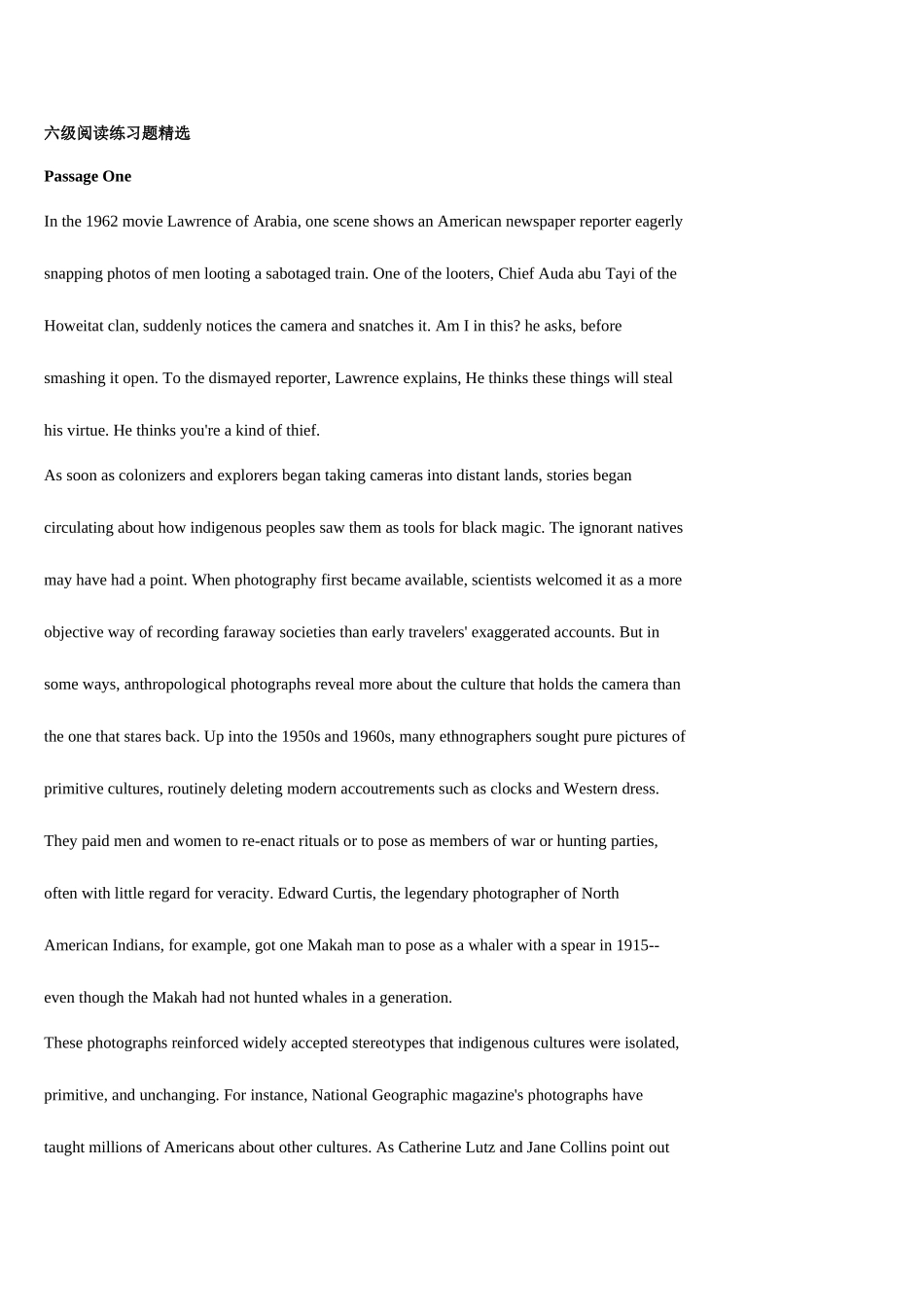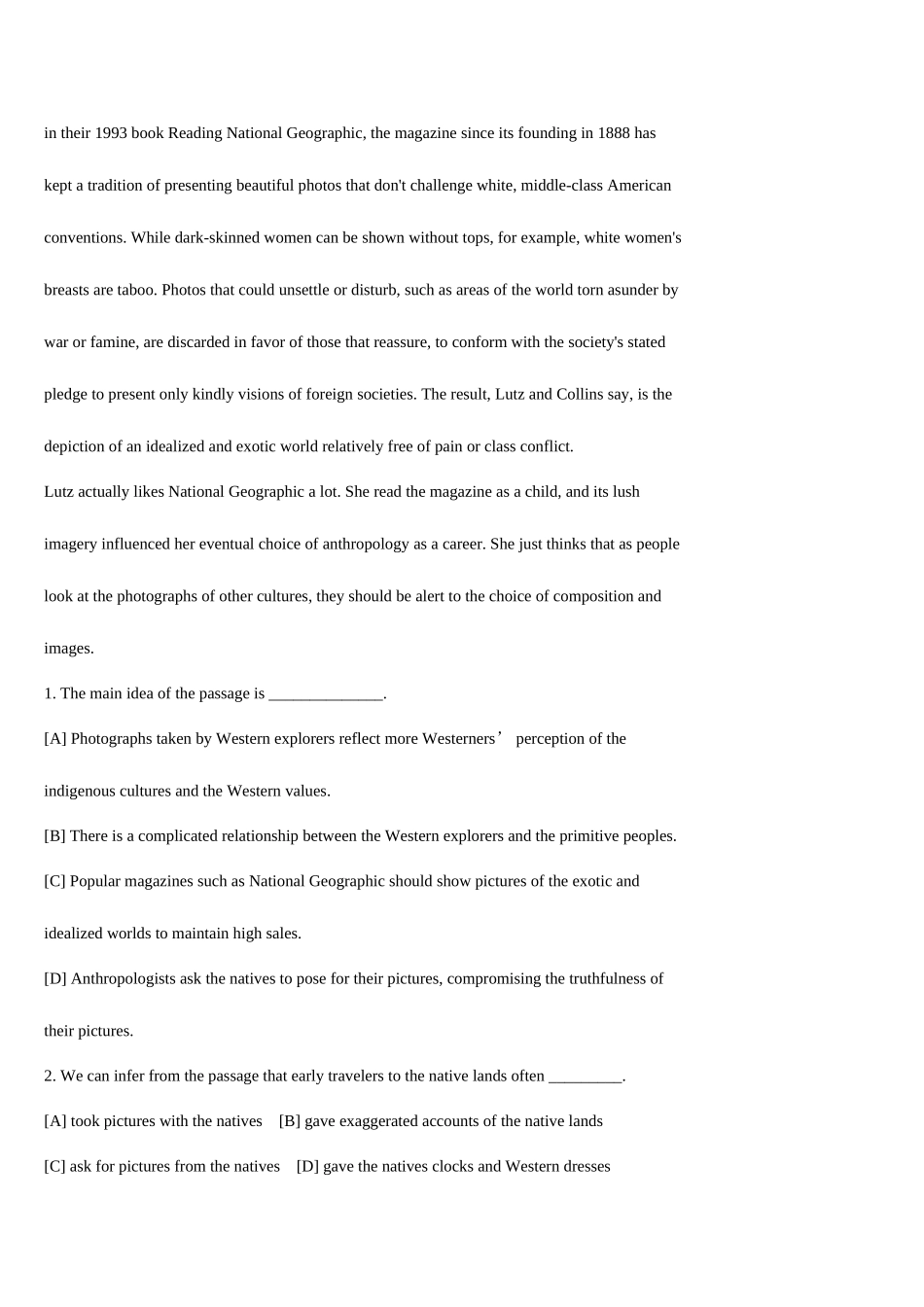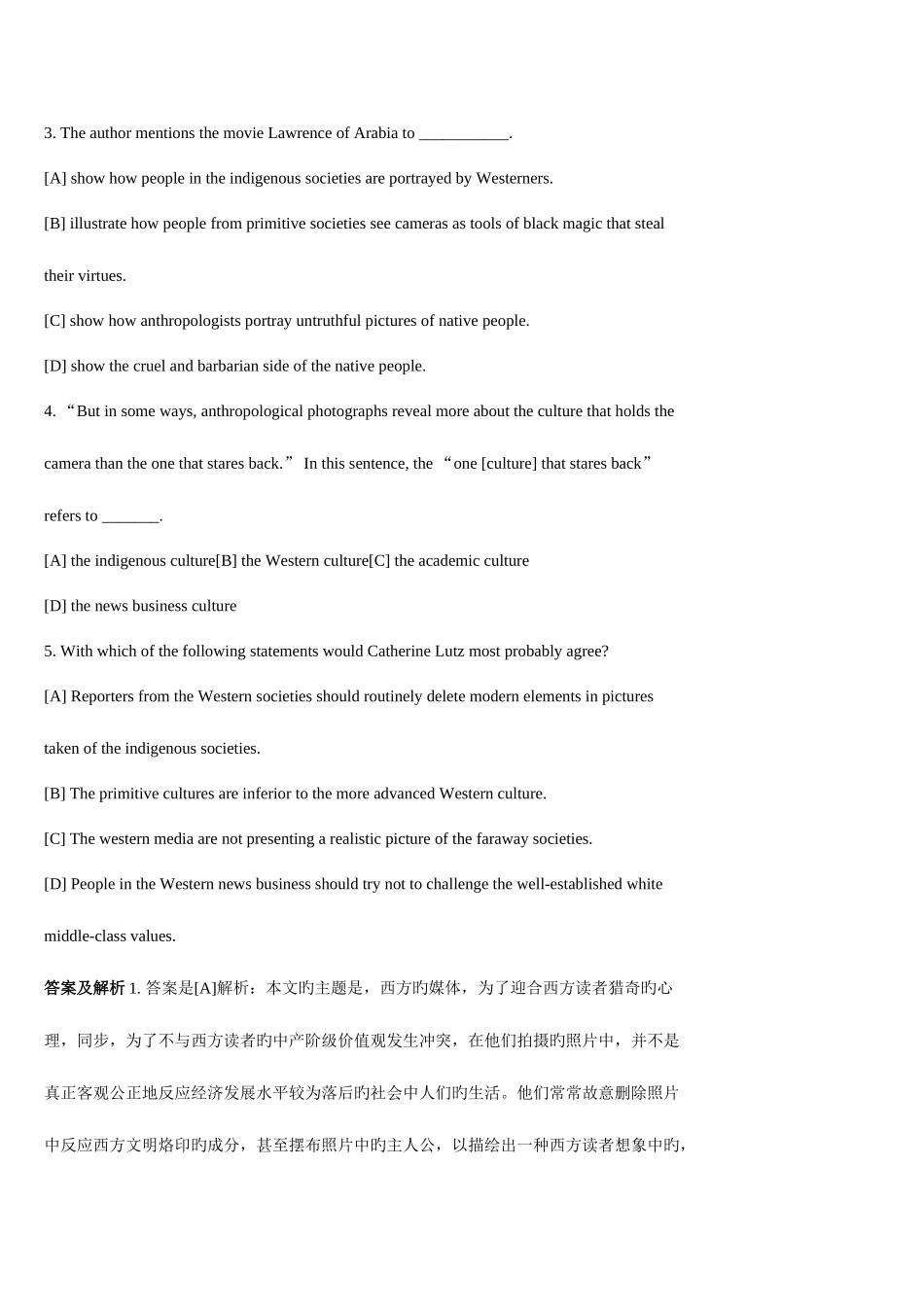六级阅读练习题精选Passage OneIn the 1962 movie Lawrence of Arabia, one scene shows an American newspaper reporter eagerly snapping photos of men looting a sabotaged train. One of the looters, Chief Auda abu Tayi of the Howeitat clan, suddenly notices the camera and snatches it. Am I in this? he asks, before smashing it open. To the dismayed reporter, Lawrence explains, He thinks these things will steal his virtue. He thinks you're a kind of thief. As soon as colonizers and explorers began taking cameras into distant lands, stories began circulating about how indigenous peoples saw them as tools for black magic. The ignorant natives may have had a point. When photography first became available, scientists welcomed it as a more objective way of recording faraway societies than early travelers' exaggerated accounts. But in some ways, anthropological photographs reveal more about the culture that holds the camera than the one that stares back. Up into the 1950s and 1960s, many ethnographers sought pure pictures of primitive cultures, routinely deleting modern accoutrements such as clocks and Western dress. They paid men and women to re-enact rituals or to pose as members of war or hunting parties, often with little regard for veracity. Edward Curtis, the legendary photographer of North American Indians, for example, got one Makah man to pose as a whaler with a spear in 1915--even though the Makah had not hunted whales in a generation. These photographs reinforced widely accepted stereotypes that indigenous cultures were isolated, primitive, and unchanging. For instance, National Geographic magazine's photographs have taught millions of Americans about other cultures. As Catherine Lutz and Jane Collins po...












